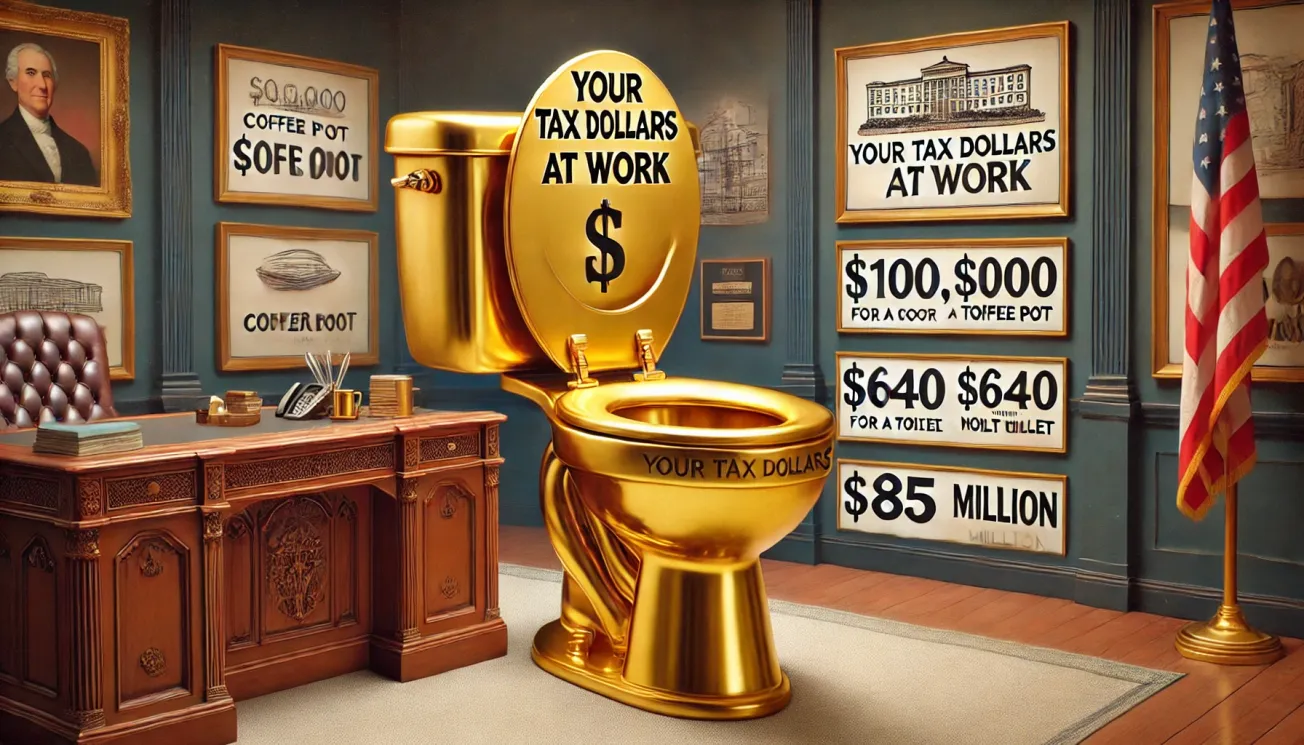What if I told you the government once spent $640 on a single toilet seat? Or that a self-cleaning Metro toilet cost taxpayers nearly half a million dollars—without ever working? These aren’t urban legends; they’re real cases of government spending gone wild.
From $7,600 coffee pots to billion-dollar transportation disasters, government waste seems endless. But why does it happen? Is it corruption? Incompetence? A lack of oversight? The reality is more complicated—and often more frustrating—than you might think.
1. The Bureaucratic Maze of Procurement
The government doesn’t buy supplies the way a business or an individual does. Federal procurement rules, designed to ensure fairness and prevent fraud, actually create inefficiencies.
For example:
- Federal contracts must comply with The Federal Acquisition Regulation (FAR), adding layers of approvals and complexity.
- Military and government equipment must meet strict durability and safety standards, often requiring custom manufacturing.
- The lowest bidder rule often means contracts go to firms that inflate prices to cover compliance costs.
This explains why a toilet seat cover costs $10,000 or why the Pentagon once spent $640 on a single seat—it’s not just a seat; it’s a “high-durability, military-grade, regulation-compliant” seat.
2. The “Use It or Lose It” Budget Mentality
Every year, federal agencies operate on a use-it-or-lose-it budget system. If they don’t spend their full allocation, their budget might be cut next year. The result?
- A spending spree every September (before the fiscal year ends).
- Reckless last-minute purchases like luxury furniture, unnecessary studies, and high-end office perks.
- Millions wasted on things like unused airline tickets (yes, the Pentagon spent $100 million on flights that no one took).
Rather than saving money, agencies rush to spend every last dollar—even if it means buying things they don’t need.
3. Political Influence and “Pork Barrel” Spending
Ever heard of pork barrel spending? It’s when lawmakers funnel government money into projects that help their own districts, whether or not they’re necessary.
- The California High-Speed Rail project was initially estimated at $33 billion. Thanks to political delays, lawsuits, and mismanagement, it has now ballooned past $105 billion—with no end in sight.
- The Washington Metro’s self-cleaning toilet cost over $400,000 to maintain—and it didn’t even work.
Why do these projects persist? Because politicians want to bring money and jobs to their districts—even when taxpayers foot the bill for failed, bloated, and unnecessary projects.
4. Defense Spending: A Unique Beast
The Pentagon has one of the largest discretionary budgets in the world, making it a prime target for waste.
- The "cost-plus" model means contractors get paid cost + guaranteed profit, so there’s no real incentive to keep prices low.
- Military contracts often fund equipment that becomes obsolete before it's even used.
- The Pentagon spent $2.4 billion on jets it didn’t need—while claiming it lacked funding for soldier pay raises.
Because defense spending is tied to national security, questioning it can be politically risky—so billions continue to disappear into black holes of inefficiency.
5. The Absurdities of Research Grants and Foreign Aid
Sometimes, taxpayer dollars go toward well-intended but ridiculous research or foreign aid projects.
- The $1.2 million study on monkey social habits was supposed to provide behavioral insights, but critics questioned its necessity.
- The $85 million loan for an unfinished Kabul hotel is a perfect example of money disappearing in unstable regions.
These types of spending may have noble goals, but they often lack proper oversight, leading to projects that never deliver results.
Can Anything Be Done About It?
While government waste isn’t going away overnight, there are ways to reduce it:
✅ Better oversight & audits – Regular, independent audits can flag excessive spending before it spirals out of control.
✅ Procurement reform – Simplifying contracting rules could lower costs by increasing competition.
✅ Incentivizing savings – Letting agencies keep some unused funds (instead of punishing them) would reduce wasteful end-of-year spending.
✅ More transparency – Public reporting (like through the Government Accountability Office) can expose wasteful projects before they drain more funds.
While total efficiency in government spending may be a pipe dream, we can minimize the most egregious cases with smarter policies and stronger oversight.
Final Thoughts
Government waste isn’t always due to corruption or incompetence—it’s often a symptom of outdated rules, misaligned incentives, and political gamesmanship.
But that doesn’t mean we should ignore it. With $100 million wasted on unused flights and billions spent on projects that never get completed, it’s time for more accountability.
So what do you think—should we focus on cutting government waste, or is some inefficiency just inevitable in a large bureaucracy? Let’s discuss.






